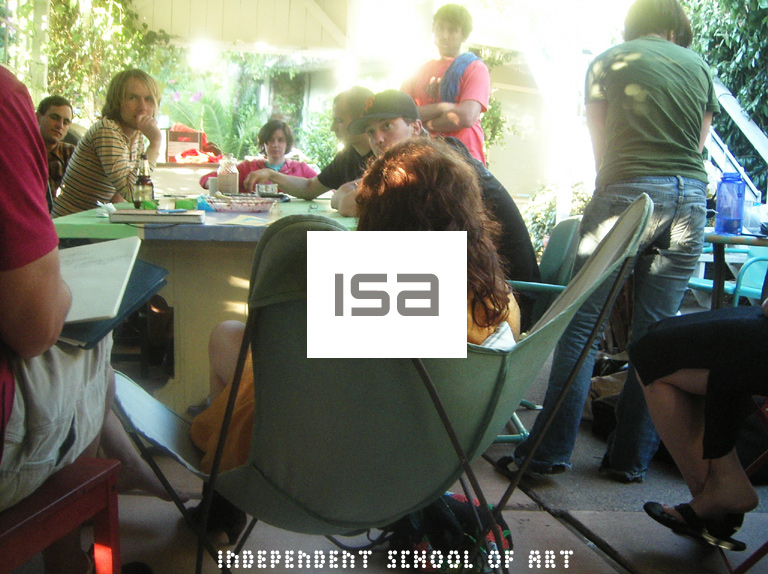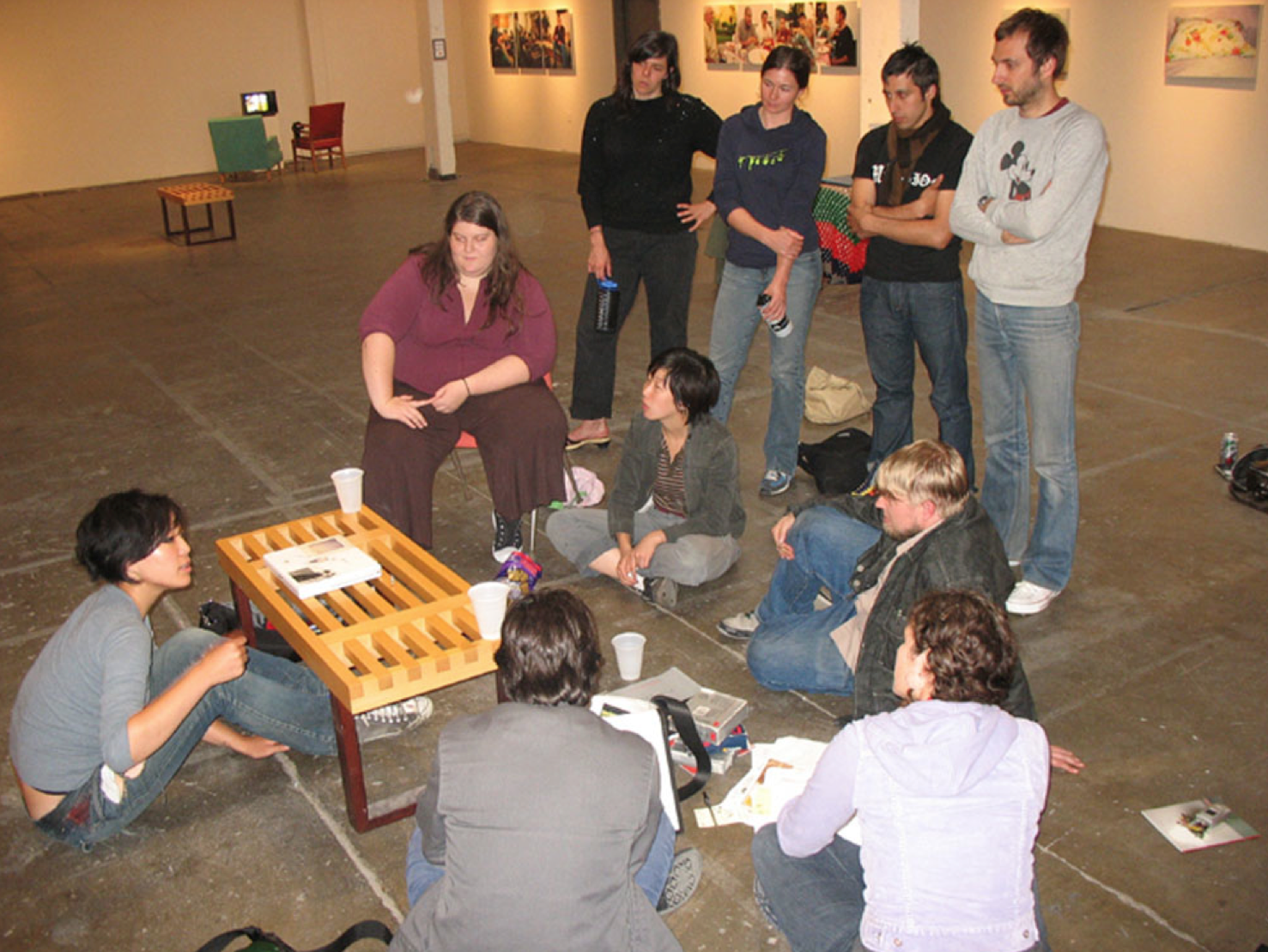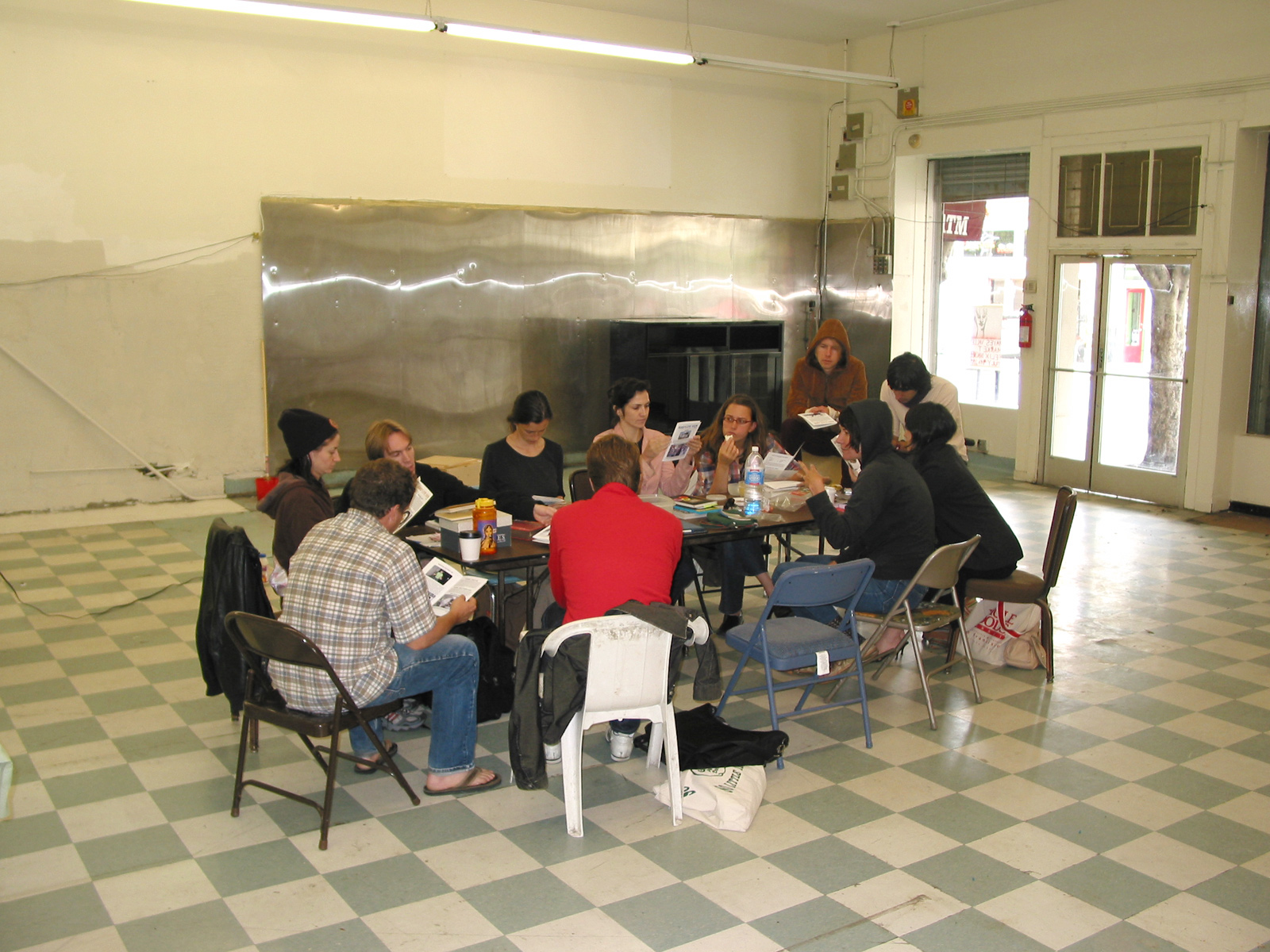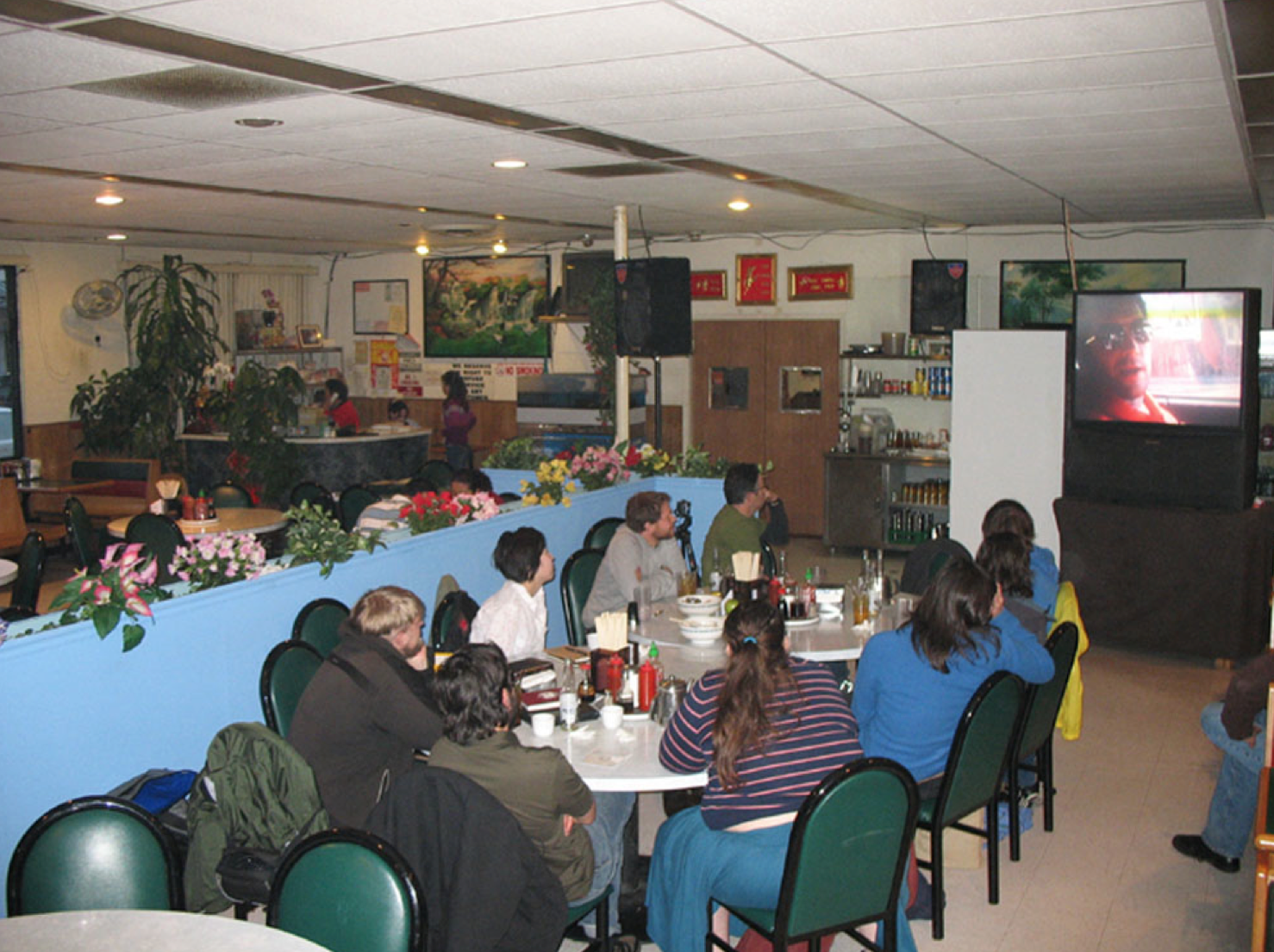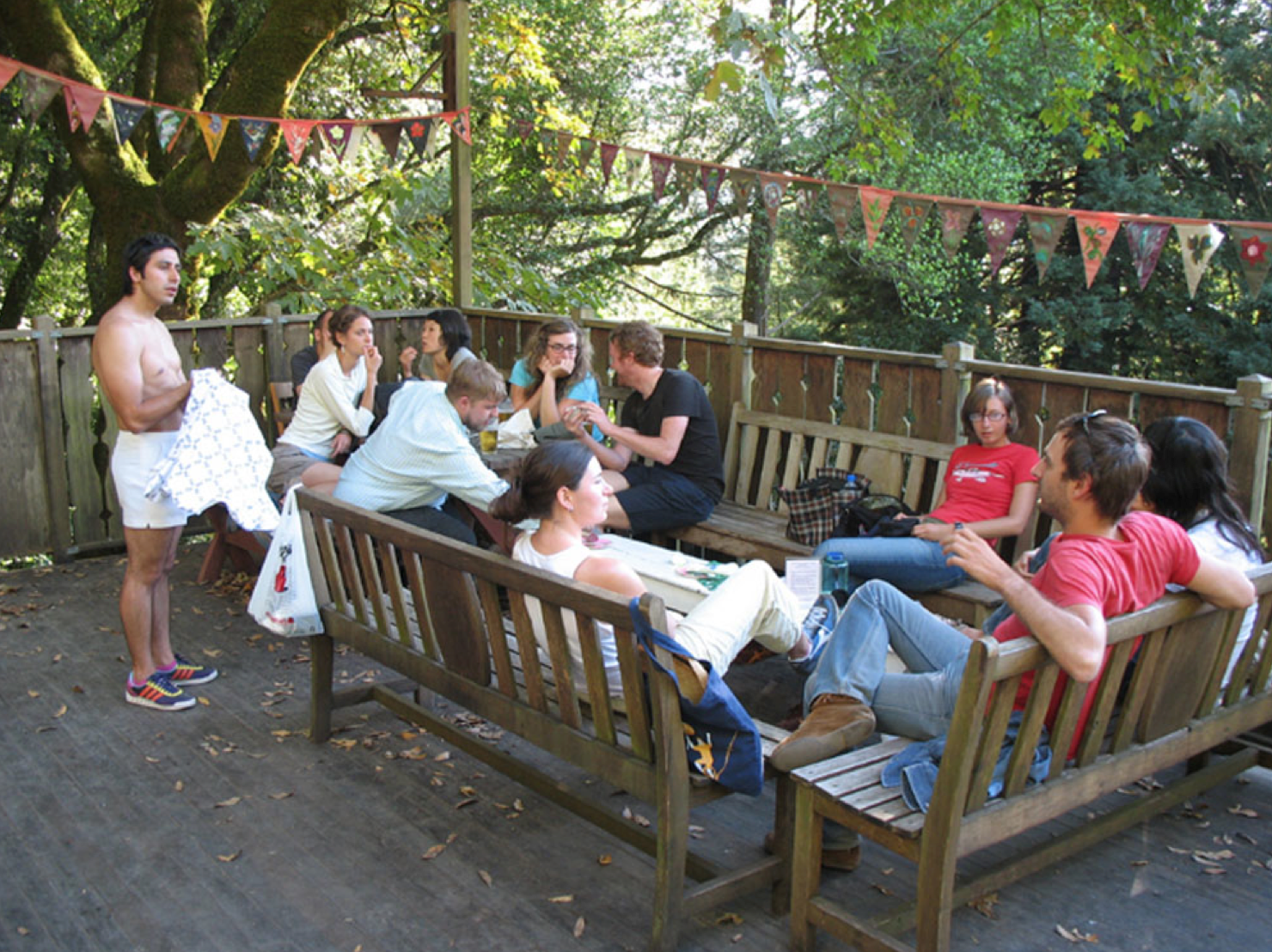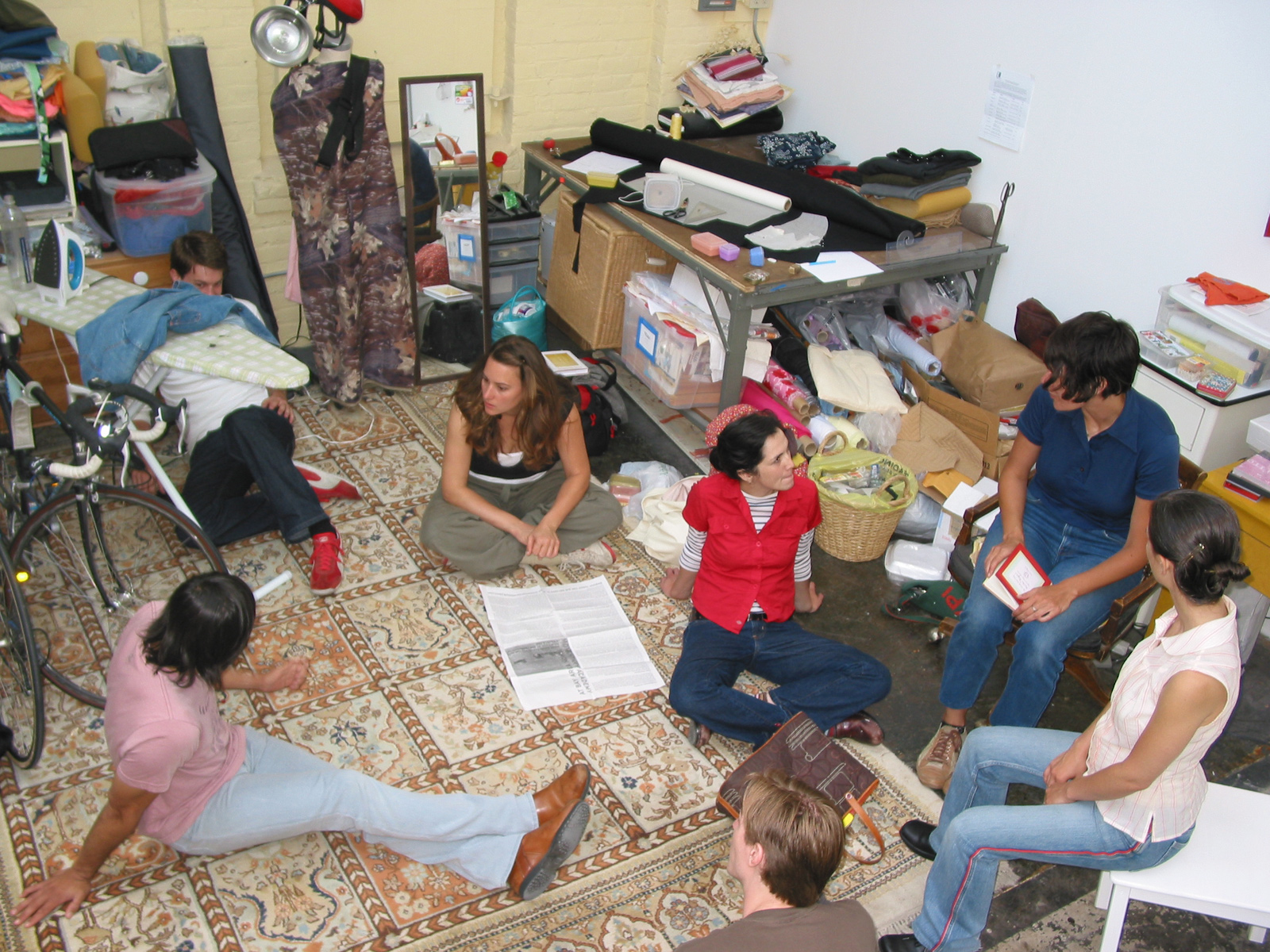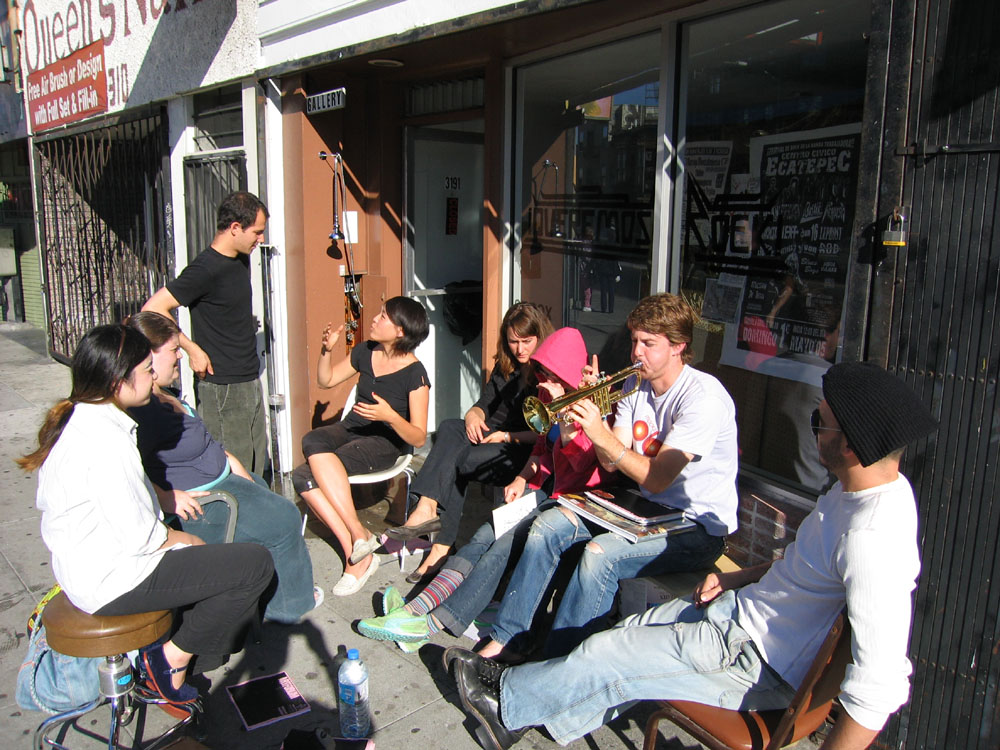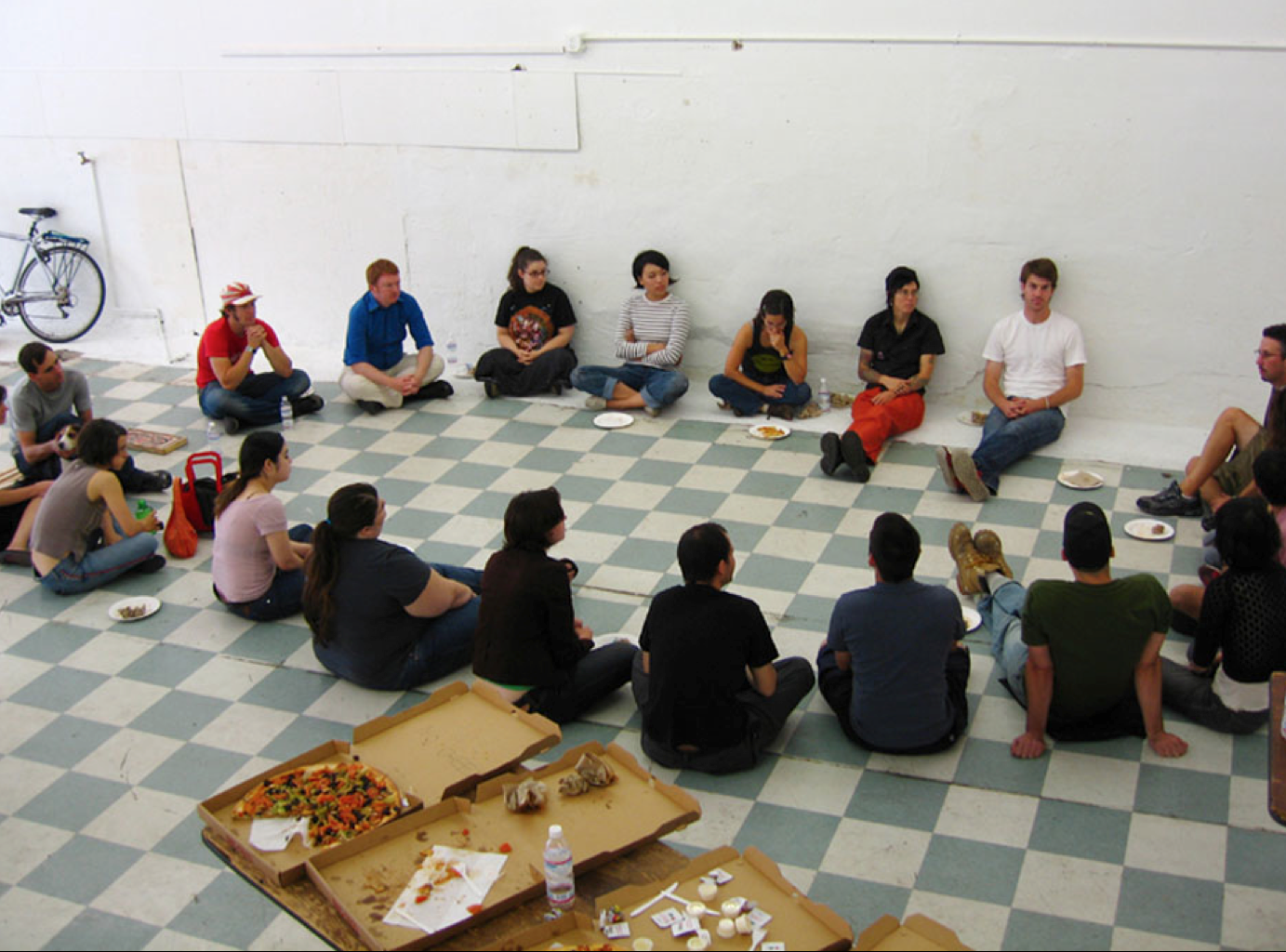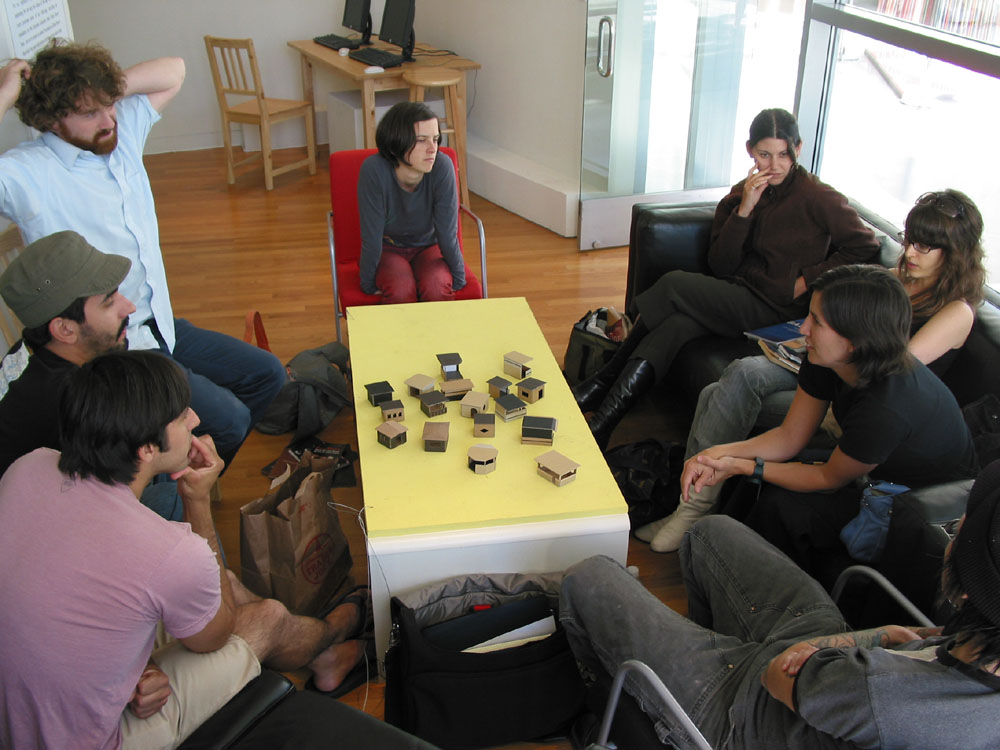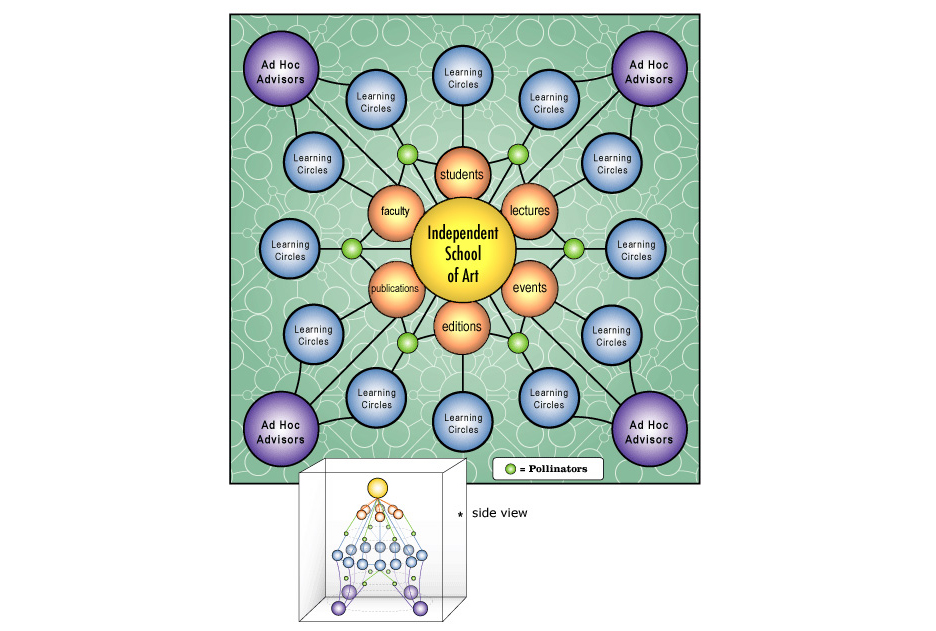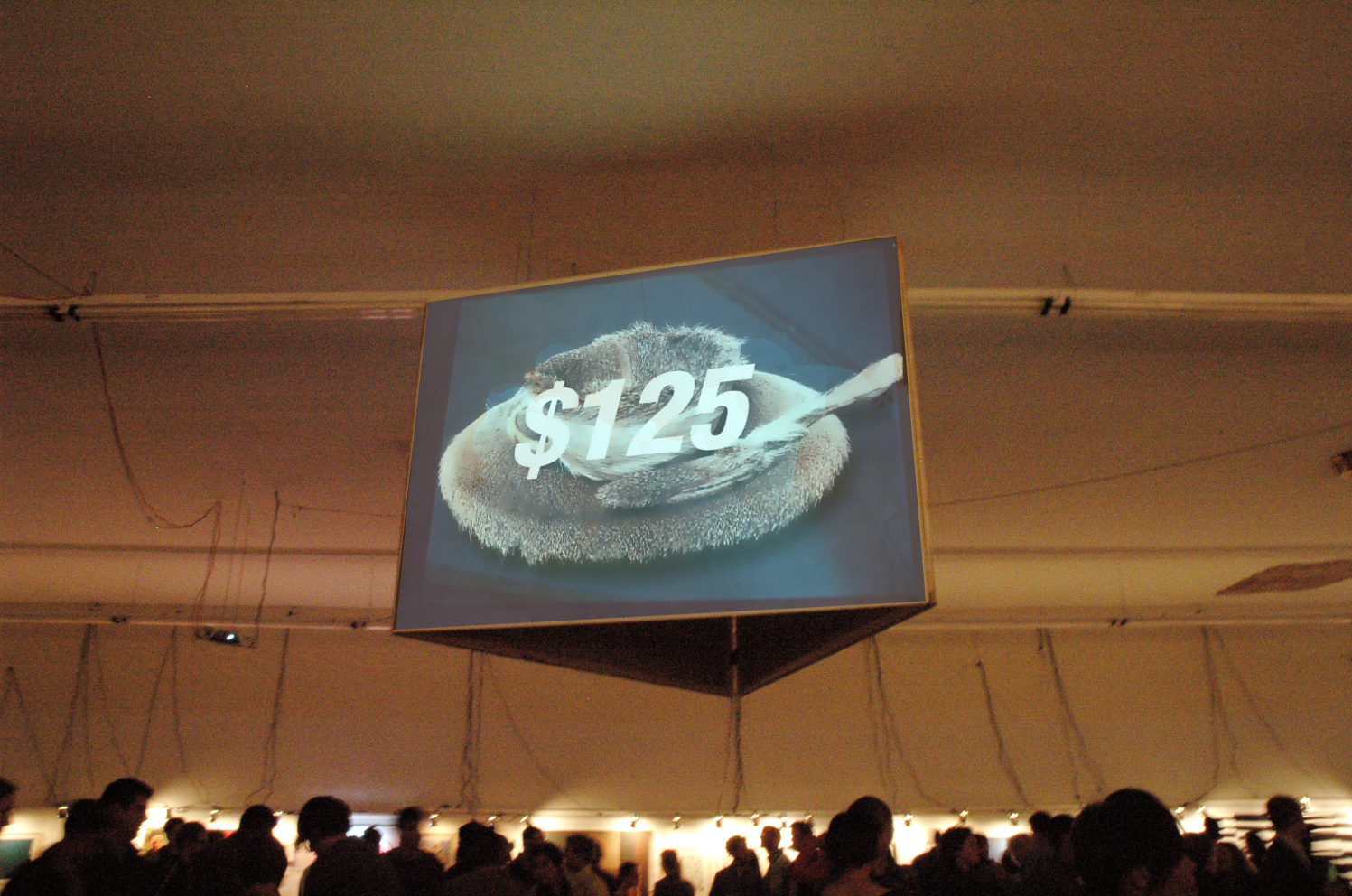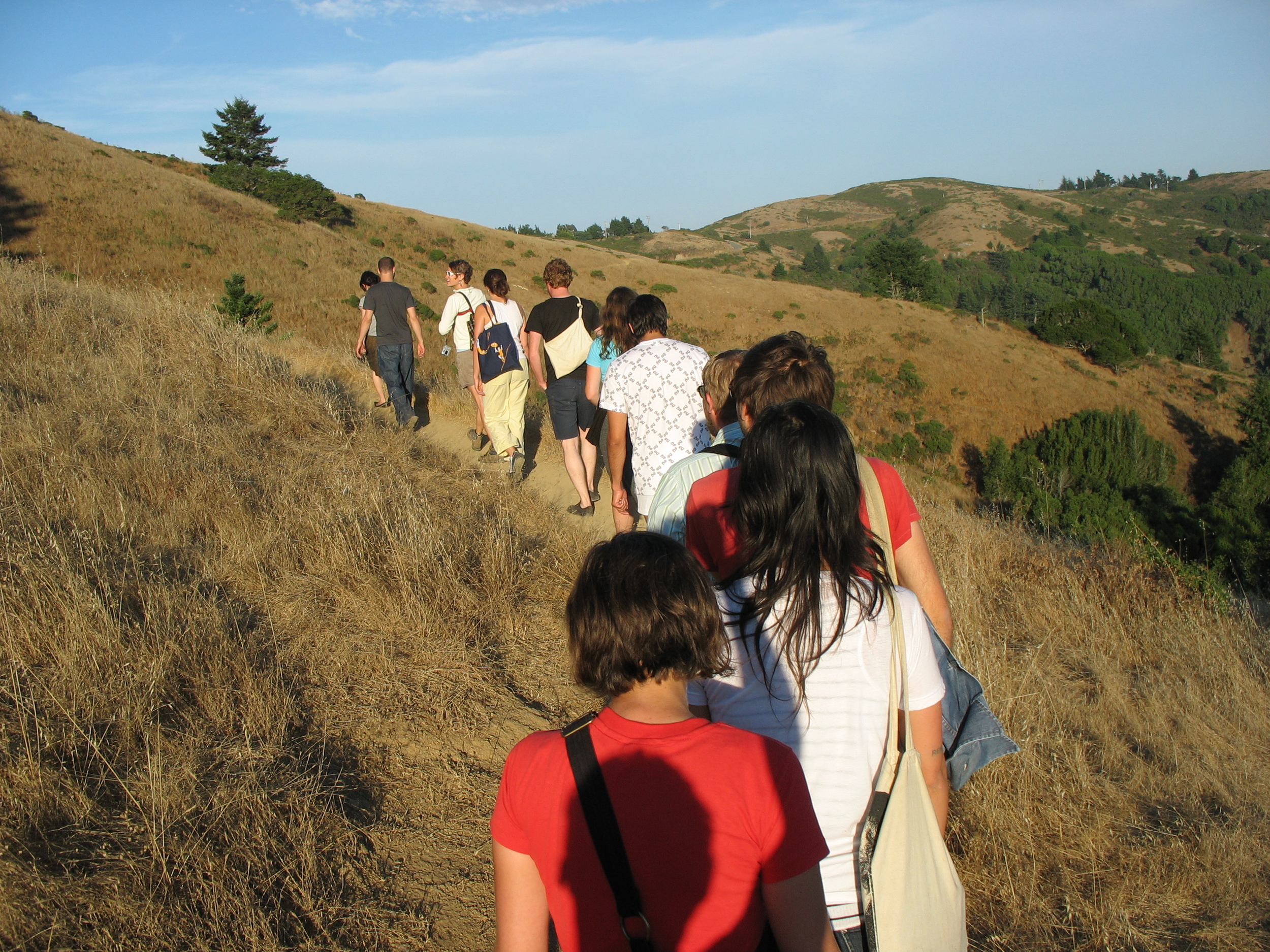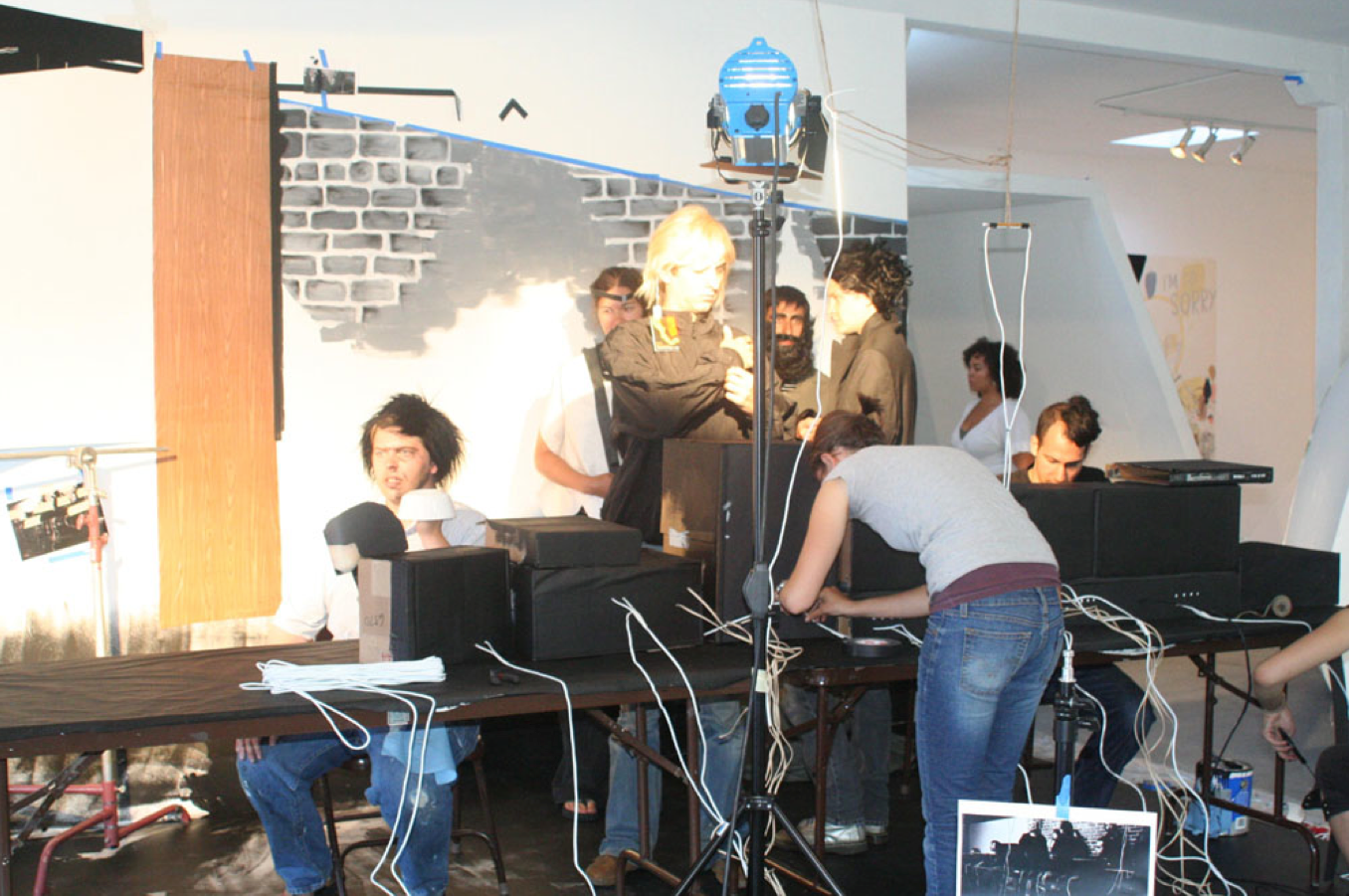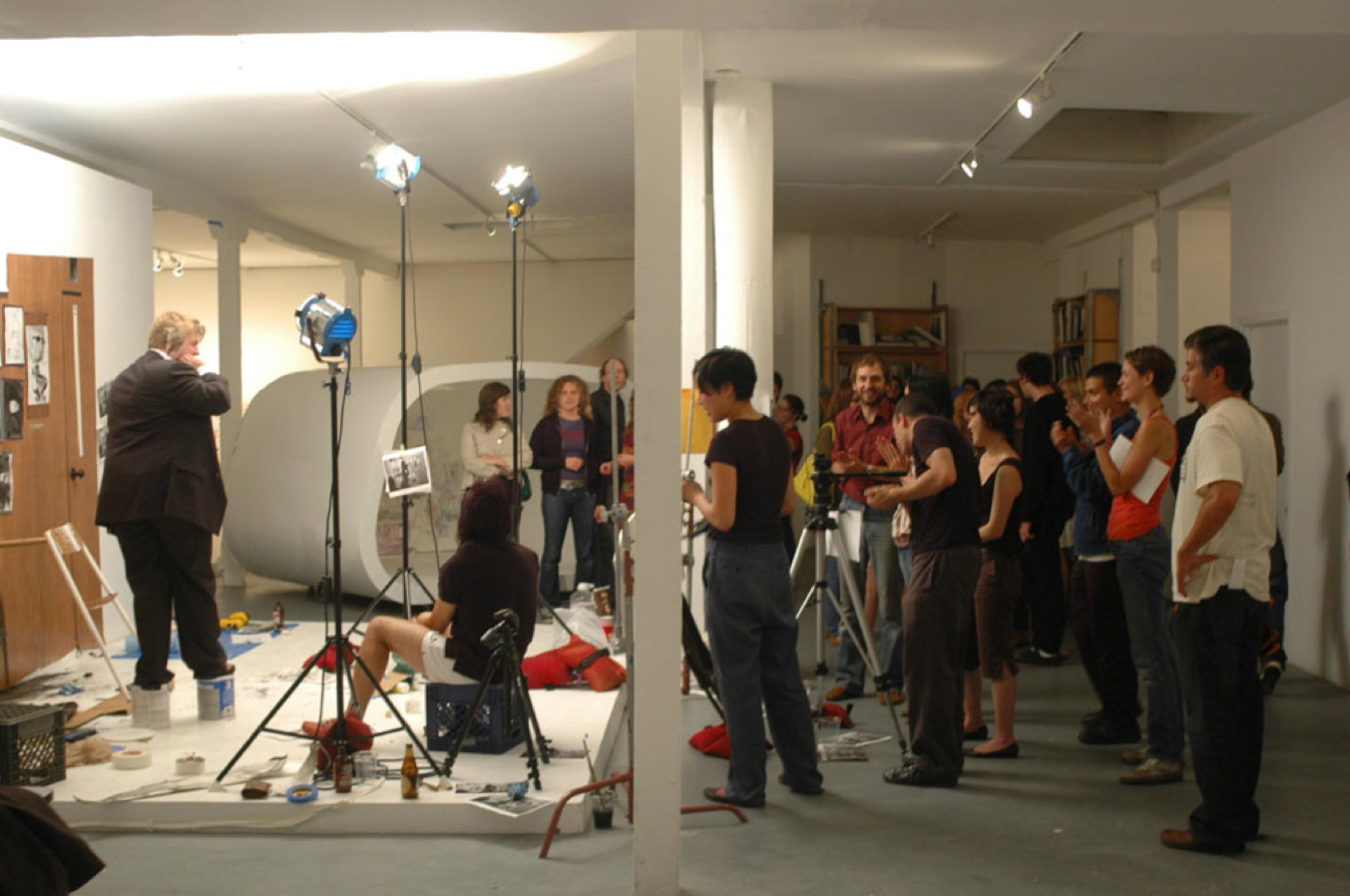The Independent School of Art (ISA)
San Francisco Bay Area 2004-2006
The Independent School of Art was an experimental art school that autonomously operated without grant-funding, academic or artworld affiliations, accreditation, or a physical site. Run solely through the labor and efforts of its participants, the school fostered an action-based approach to college-level arts education, a real-world model where students were challenged to determine and create their own artistic realities. The school's barter-based tuition system made explicit the social contract between students and teachers and honored their collective labor as a vital form of cultural production. Locating nomadically, the school prioritized social over physical architecture, and asked all involved to imagine how their practice might intersect and respond to a larger set of physical situations and cultural possibilities outside the conventions of the artworld.
The ISA complemented its curricular offerings with student and faculty designed exhibitions, fundraisers, lectures, grants, publications and performances. These multi-disciplinary public actions were a central part of the school's pedagogy, and served a vital function by engaging the students in the direct creation of public culture. The ISA was designed for continual reinvention and experimentation, changing each season to reflect the ambitions, personalities and abilities of those in its community
From a list of some things the Independent School of Art does or might do:
Runs completely outside of an institutional framework (no grant-funding, no academic or artworld affiliations).
Is nomadic, non–site based, must utilize a multiplicity of spaces and thus expands beyond the paradigms embraced by all art schools of developing artists in a series of white cubed studios, classrooms and student/faculty galleries that leads to the larger white cubes of the conventional art world.
Looks at the education of the artist and the production of art through a multi-disciplinary lens as seminars, workshops and events involve subjects and experts in the fields of math, rhetoric, comedy, cooking, farming, architecture, fashion, sports, spirituality, etc..
Because the ISA is not dependent on personal economic resources or public funding it is open to a more diverse student population.
A place where teacher/lecturers can experiment with new ideas and methodologies.
A place where artists and experts from other fields would be invited to contribute their skills, lead discussions, participate in the student’s work or carry out their own projects.
Prepares students for the real world because it takes place in the real world.
By taking place in the real world without significant resources, the ISA does not mythologize the benefits of an arts education or the realities of structuring a life as an artist.
It’s nomadic structure forces the school to constantly negotiate it’s presence and relevance in the world. By locating in parks, office buildings, tents, other schools, homes, backyards, buses, etc. we create a situation where students and teachers alike can become responsive to a lager set of physical situations and cultural possibilities outside of academia.
The ISA is open to students of all ages and levels of experience, creating a situation of shared one-room-schoolhouse learning and mentorship.
With it's reliance on student input and labor the ISA educates students to be designers of their own pedagogical experiences.
By taking away, even momentarily, the $50,000-$250,000 stress of a traditional arts education, students are free to envision a wider set of possibilities for themselves as creative individuals. Art school’s should have no specific responsibility to the art industry or the creation of an artist elite. But instead should develop aesthetically and critically aware individuals who can apply their skills to a wide set of applications and environments, including the art world.
The barter tuition system has students recognize, value, and utilize their diverse talents and skills.
The ISA will remain unrestrained by conventional structures and rigid guidelines, it shall change year by year, reflecting the dreams, the ideals, the ambitions, the personalities and the abilities of those in it’s community. This will fundamentally be imperfect.
Although idealistic in it’s goals and offerings, and more democratic than a institutional eduction, the ISA is not a Beuysian metaphor, but a functioning, practical manifestation where students will be held responsible for attendance, participation and a rigorous involvement with their work.
The ISA values commitment and the social contract between teacher and students without the default structure of institutional authority to keep this in place.
Simplifies the often invisible and labyrinthine institutional contracts between students, teachers, administrators, and funders and redraws them as direct agreements towards mutual goals.
ISA’s barter-based system makes explicit and direct the social contract between students and teachers and honors their collective labor as a vital form of cultural production.
The often undisclosed yet tacitly agreed upon reality of art schools is that they function like corporate structures dependent on attracting a maximum numbers of students-consumers in an ever competitive market-driven economy. If students do not attend the ISA than the ISA does not exist, no problem.
ALUMNI
Faculty
Jon Rubin and Bob Linder
Alumni
Verda Alexander, NyQ Bonaventura, Amber Cady, Catherine Czacki, Rita DiLorenzo, Jennifer Durban, Maggie Foster, Amy Fung-Yi Lee, Erica Gangsei, Sean Glover, Ron Goldin, Lori Gordon, Joyce Grimm, Pablo Guardiola, Jeff Harland, Amanda Herman, Engelbert Holder, Whitney Hubbs, Thia Jennings, Kika Jonsson, Bryan Kaplan, Melissa Kaseman, Helena Keeffe, Katelyn King, Jasmin lim, Corinne Matesich, Sean McFarland, Naomi Miller, Rebecca Millsop, Daniel Minnick, Jason Mortara, Haden Nicholl, Susan O'Malley, Caroline Park, Joshua Pieper Eric Renehan Jones, Lettie Jane Rennekamp, Chika Sato, Matthew Shain, James Tantum, LissaIvy Tiegel, Melissa Weinberg, Virginia White, Lindsey White

